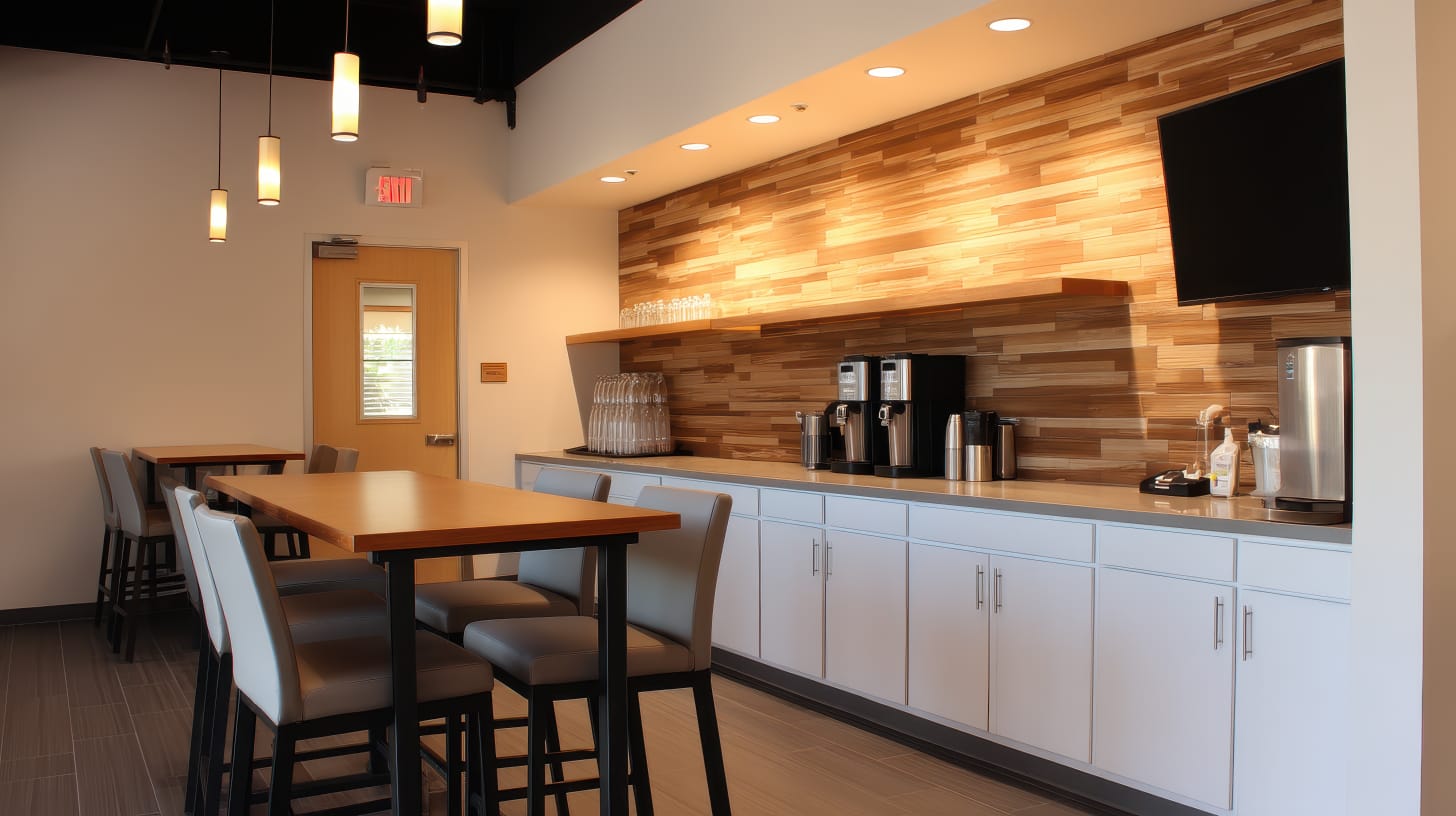
Your breakroom is a vital space for creating a serene haven in a hectic work setting. Did you know that a well-furnished breakroom can enhance company culture, reduce stress, and even boost morale? A good tip is to strike the right balance between durability and design in your furniture choices. Wondering about what layout and furniture is needed to strike this balance? Well, read on.
What Is a Breakroom?
A breakroom is a designated area in a workplace where employees can relax, eat meals, and take short breaks from their tasks. It may range from a simple kitchenette with a few tables to a fully outfitted lounge space with comfortable seating, vending machines, and appliances depending on the size of the organization. Regardless of the size, the goal of this space is the same: to provide a comfortable and functional environment where employees can recharge.
Now, since this space serves so many purposes and sees frequent traffic, the breakroom furniture you choose should be functional, aesthetically-pleasing and long-lasting. Let’s explore the key components to consider.
Seating
Seating is arguably the most important element of any breakroom. You’ll want options that are comfortable to encourage employees to use the space, yet sturdy enough to withstand heavy, daily use.
For instance, chairs and stools should be made of durable materials like metal or reinforced plastic. If upholstered, choose commercial-grade stain-resistant fabrics that also resist moisture and wear. Ergonomic design is a plus, especially in larger organizations where employees may spend a significant amount of time in the breakroom.
Modular seating and banquettes are great for modern spaces that value flexibility. These can be reconfigured easily to provide variety and accommodate different group sizes.
Tables
Tables serve many purposes in the breakroom. These include eating, working, and even impromptu meetings. As such, they need to be multi-functional and strong. You could choose tables with high-pressure laminate (HPL) surfaces, which are resistant to scratches, heat, and moisture.
You may also consider a mix of communal tables and smaller two- or four-person tables to promote both socialization and quiet breaks. Adjustable-height tables or café-style high-tops can add visual interest and support diverse seating preferences.
Cabinets and Storage
While often overlooked in the breakroom design, storage plays a critical role in maintaining a tidy and efficient space. Of course, employees need a place to store snacks, utensils, and other personal or shared items. You should look for cabinets with heavy-duty hinges and durable materials, such as metal or laminate wood. Soft-close drawers and easy-to-clean surfaces can enhance the user experience while prolonging the life of the furniture.
Don’t forget about lockable cabinets for storing cleaning supplies or higher-value items. Open shelving can also be useful for quick access to frequently used items such as mugs or paper plates, as long as it doesn’t cause visual clutter.
Counters and Surfaces
From meal prep and coffee making to serving as an extra surface for collaborative work, breakroom counters have a lot of tasks to accomplish. These surfaces must be water- and heat-resistant, easy to wipe clean, and durable enough to withstand frequent use.
Quartz, granite, and solid surface materials are popular for their longevity and appearance, though they may come at a higher cost. Laminate countertops, on the other hand, are a budget-friendly alternative that still offers decent durability and comes in a wide variety of finishes.
Integrating power outlets and USB ports into counter areas can support today’s tech-driven workplace, making the breakroom more than just a place to grab coffee.
Balancing Durability with Design
While functionality and durability are key, the aesthetics of the breakroom shouldn’t be an afterthought. A thoughtfully designed space can promote relaxation and foster a sense of belonging among employees.
Use color wisely: Soft, neutral tones promote calm, while bold accents can energize the space. Natural finishes, like wood or stone textures, create a warm and inviting feel.
Get lighting right: Combining natural light with layered ambient and task lighting creates a welcoming environment.